-
Posts
1,197 -
Joined
-
Last visited
-
Days Won
4
Content Type
Profiles
Forums
Blogs
Gallery
Events
Store
Everything posted by Deutschritter
-
Gentlemen, this is what I have for Erich von Warburg (1864–1924), if anyone can add anything (especially further decorations), that would be great: Sekondeleutnant (2nd Lieutenant) on 18 November 1883 ... Commissioned in the 1. Schlesisches Jäger-Bataillon Nr. 5 in Görlitz ... as of Rangliste 1885 in the 4th Company ... as of Rangliste 1887 in the 3rd Company (stationed in Hirschberg as of 1 April 1887) ... c. 1889 Adjutant of the Jäger-Bataillon "von Neumann" (1. Schlesisches) Nr. 5 (the Jäger battalion had been renamed on 27 January 1889) Premierleutnant (1st Lieutenant) in c. 1892 ... c. 1894 Adjutant of the 69. Infanterie-Brigade in Graudenz (subordinated to the 35. Division/XXVII. Armeekorps) Hauptmann (Captain) on 27 January 1897 (later received a Patent with effect from 27 January 1896) ... c. 1898 Commander of the 10th Company/Grenadier-Regiment "König Friedrich Wilhelm II." (1. Schlesisches) Nr. 10 in Schweidnitz ... c. 1902 Commander of the 9th Company/4. Niederschlesisches Infanterie-Regiment Nr. 51 in Breslau ... c. 1904 Commander of the 9th Company/5. Garde-Regiment zu Fuß in Spandau Major on 27 January 1907 ... 5. Garde-Regiment zu Fuß (aggregated) ... c. 1908 Staff of the Kaiser Alexander Garde-Grenadier-Regiment Nr. 1 in Berlin ... c. 1910 Commander of the 1st Battalion/Kaiser Alexander Garde-Grenadier-Regiment Nr. 1 in Berlin Oberstleutnant (Lieutenant Colonel) 16 June 1913 ... Staff of the 8. Thüringisches Infanterie-Regiment Nr. 153 Oberst (Colonel) on 18 June 1915 (this is the correct date, although another source states 13 July 1915) ... May 1916 Commander of the Reserve-Infanterie-Regiment Nr. 216 ... January 1917 Commander of the 172. Infanterie-Brigade (subordinated to the 86. Infanterie-Division) ... ... at the Eastern Front, as of 1 February 1918 again at the Western Front, in the same month, he fell severly ill ... 31 May 1918 to 23 January 1919 Commander of the 112. Infanterie-Brigade (subordinated to the 56. Infanterie-Division) at the Western Front Generalmajor (Major General) on 15 July 1918 ... December 1918 Border protection in Westphalia ... 8 February to 25 June 1919 Commander of the 40. Infanterie-Brigade Prussian Centenary Medal 1897 (Zentenarmedaille) Knight of Honour (Ehrenritter) of the Johanniter-Orden on 16 February 1898 as Captain and Company Commander in the Grenadier-Regiment "König Friedrich Wilhelm II." (1. Schlesisches) Nr. 10 Red Eagle Order (Roter Adlerorden), 4th Class with the Crown Prussian Long Service Cross for 25 Years (Dienstauszeichnungskreuz), 1908 Knight of Justice (Rechtsritter) of the Johanniter-Orden in c. 1909 Imperial Russian Sankt-Stanislaus-Orden, II. Class (RSt2) Iron Cross (1914), 2nd and 1st Class Brunswick War Merit Cross, 2nd Class (BrKr2/BrK2) Oldenburg Friedrich-August-Kreuz, 2nd and 1st Class (OFA1/OK1) Prussian Order of the Crown, 2nd Class with Swords in March/April 1917
-
Gentlemen, this is what I have for Alexander Friedrich von Woldeck (1720–1796), if anyone can add anything (especially further decorations), that would be great: 17 December 1738 Gefreiter-Korporal (Officer Candidate) 9 February 1741 Fähnrich (Officer Cadet) 7 August 1742 Sekondelieutenant (2nd Lieutenant) 24 May 1747 Premierlieutenant (1st Lieutenant). 17 December 1756 Stabskapitän (Staff Captain) 2 August 1757 Kapiän und Kompangniechef 24 December 1861 (?) Major 20 May 1772 Oberstlieutenant (Lieutenant Colonel) 20 May 1773 Obrist (Colonel) 23 May 1782 Generalmajor (Major General) 20 May 1789 Generallieutenant (Lieutenant General) Pour le Mérite on 8 January 1774 Red Eagle Order, 1st Class in 1792 Regimentschef (Colonel-in-Chief) of the Füsilier-Regiment "Lossow" in Minden on 22 May 1782
-
Good evening, Dave! Could it be that Rittmeister Otto Schönberg, Oberbeamter der Ansiedlung zu Langgoslin, was his uncle? If yes, then Generalleutnant z. V. Wilhelm Schönberg (HOH3X in WWI), also born in Langgoslin (1872), was his younger cousin. Or maybe Otto was his father? Then Wilhelm was his brother? Thanks! Andreas
-
I found a some information on Bader at the AHF, sadly no picture: https://forum.axishistory.com/viewtopic.php?f=5&t=272669 Luftwaffe Officer Career Summaries writes: BADER, Karl. (DOB: 22.03.88). 13.10.39 Maj.(Erg.O.), from Stab/Lg.Kdo. XIII trf to Stab/Flak-Rgt. 22. 01.07.41 promo to Obstlt.(Flak). 20.01.43 Obstlt.(Erg.O.), trf from Stab/13. Flakdiv. to Stab/Lg.Kdo. Finnland (as Qu Ib) (to 25.05.43). 25.05.43 trf to Führer-Reserve/Ob.d.L. and ordered to Stab/General z.b.V. beim Chef d.Luftwehr for temporary duty. 18.07.45 Obstlt.(Flak).
-
Gentlemen, the later SS-Gruppenführer Richard Heinrich Glücks served with the Clevesches Feldartillerie-Regiment Nr. 43 and the Reserve-Feldartillerie-Regiment Nr. 13. Somehow the second ribbon (from left) does not look like the Ehrenkreuz für Frontkämpfer, am I seeing that wrong? Maybe the lighting? Wikipedia and other sources claim, he was Oberleutnant with the Reichswehr until July 1926, but I cannot find him in the Ranglisten (1925, 1926). Can anyone help out? Thanks.
-
Gentlemen, this is what I have for Johannes "Hans" Friedrich Leopold von Seeckt, any additions (maybe a Chinese decoration from his time as General Advisor (Generalberater) to Chiang Kai-shek?) or corrections what be great: 1885 Avantageur (Fahnenjunker) in the Kaiser Alexander Garde-Grenadier-Regiment Nr. 1 of the Garde-Korps 15.1.1887 Sekonde-Lieutenant (2nd Lieutenant) 27.1.1894 Premier-Lieutenant (1st Lieutenant) 27.1.1900 Hauptmann (Captain) 17.11.1906 Major 4.4.1913 Oberstleutnant (Lieutenant Colonel) 27.1.1915 Oberst (Colonel) 26.6.1915 Generalmajor 18.6.1920 Generalleutnant 18.12.1920 General der Infanterie 1.1.1926 Generaloberst ... When he retired on 8 October 1926, he was authorised to wear of the uniform of the 9. (Preußisches) Infanterie-Regiment with general officers' insignia.(Thanks, Glenn!) Prussian Centenary Medal 1897 China Commemorative Medal (China-Denkmünze) in Steel for non-combatants on 19 December 1901 as Hauptmann in the general staff of XVII. Armee-Korps Order of the Red Eagle, 4th Class (RAO4) Prussian Service Cross Award, 1910 Crown to his Order of the Red Eagle 4th Class (ROA4mKr) on 13 September 1911 Order of the Crown (Prussia), 3rd class Order of Saint Anna, 3rd class (RA3) Knight of Honour (Ehrenritter) of the Johanniter-Orden Military Merit Order (Bavaria), 3rd class (BMV3) Swedish Order of the Sword, Knight's Cross 1st class (SS3a) Albert Order, Knight's Cross 2nd class (SA3b) Iron Cross (1914), 1st and 2nd class Pour le Mérite with Oak Leaves ... Blue Max for the Gorlice–Tarnów offensive ... Oak Leaves on 27 November 1915 Bavarian Military Order of Max Joseph, Commander's Cross (BMJ2) Military Merit Order (Bavaria), 2nd Class with Swords and Star (BMV2⚔mSt/BM2⚔mSt) Württemberg Order of the Crown, Commander with Swords (WK2b⚔) Hesse Bravery Medal (HT) Hanseatic Cross of Hamburg (HH) Military Merit Cross (Mecklenburg-Schwerin), 1st class Mecklenburg-Schwerin Military Merit Cross (Großherzoglich Mecklenburg-Schwerinsches Militärverdienstkreuz), 1st Class (MMV1/MK1) Oldenburg Friedrich August Cross (de), 2nd and 1st class (OK1) Ducal Saxe-Ernestine House Order (Herzoglich Sachsen-Ernestinischer Hausorden), Commander's Cross 1st Class with Swords (HSEH2a⚔/HSH2a⚔/E23a⚔) Order of Saint Stephen of Hungary, Commander's Cross (ÖSt2/UngSt2/USt2) Austrian-Hungarian Imperial Order of Leopold, 1st Class with the War Decoration (ÖL1aK) Knight of the Austrian-Hungarian Order of the Iron Crown, 1st Class with the War Decoration (ÖEK1mKD/ÖE1K) Military Merit Cross (Austria-Hungary), 2nd Class with the War Decoration (ÖMV2mKD/ÖM2K) Star of the Austro-Hungarian Decoration for Services to the Red Cross with the War Decoration (ÖR1K) Imtiyaz Medal of the Ottoman Empire (de) in Gold with Swords/Sabers (TJ1⚔) Ottoman Order of Osmanieh, 1st class with Swords/Sabers (TO1⚔) Ottoman Order of the Medjidie, 1st class with Swords/Sabers (TM1⚔) Ottoman Liakat Medal in Gold with Swords/Sabers (TL2⚔) Ottoman Gallipoli Star (Eiserner Halbmond, TH) Bulgarian Order of Bravery, 2nd class (BT2) Bulgarian Order of Military Merit, Grand Cross (BO1) Johanniter Order, Knight of Justice (Rechtsritter) Ehrenkreuz für Frontkämpfer Honours Three regiments of the Wehrmacht received his honorary name: ... Infanterie-Regiment 67 „Generaloberst von Seeckt“ ... Panzergrenadier-Regiment 67 „Generaloberst von Seeckt“ ... Grenadier-Regiment 67 „Generaloberst von Seeckt“
-
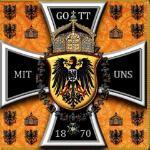
Heer Brauchitsch, Walther von
Deutschritter replied to hucks216's topic in Germany: All Eras: Signature Database
Just sensational, thanks so much! I hope, he survived the war. Concerning the ribbon bar, would you agree with EKII, Dienstauszeichnung (4th Class) and Sudetenland medal with clasp Prager Burg? -
Commander's cross as Dutch Oberst? That's generous, but certainly deserved. Thanks, Glenn!
-
-
His promotion is said to have happened in 1917, after receiving his doctorate (Ruprecht-Karls-Universität Heidelberg). Does the list also show the Reserve doctors? Thanks! His units were: Grenadier-Regiment „König Friedrich I.“ (4. Ostpreußisches) Nr. 5 in Danzig (Meldung als Kriegsfreiwilliger), Reserve-Infanterie-Regiment Nr. 227 (Western Front), Reserve-Infanterie-Regiment 232 and Reserve-Lazarett II in the Landhausschule in Heidelberg.
-
Gentlemen, this picture is allegedly from 1916 ... my question for the experts: Is he here Feldunterarzt der Reserve, Feldhilfsarzt der Reserve or even already Assistenzarzt der Reserve (his last known rank in WWI)? Thanks! One source states, in WWII he was also Generalarzt, but I cannot find a confirmation.
-
Good question, but I am not an expert. Seebach (b. 8 June 1787 auf Gut Storndorf, Amt Storndorf, Oberamt Alsfeld, Upper Principality of Hesse, Landgraviate of Hesse-Darmstadt, Holy Roman Empire) received his FEL5 (Knight) in 1812 (Königlich-Württembergisches Hof- und Staats-Handbuch, 1812, p. 42) as Major in the Chevauxlegers-Regiment Nr. 2 for Napoleon's Russian campaign (Württemberg served Napoleon from 1806 to 1813) for his service in the bloody Battle of Borodino. He received his FEL4 (Officer) in c. 1822/23, in a time when King Louis XVIII loved handing out decorations, often to Germans, especially if they already had a lower class of the order. If his successors did the same, I do not know.
-
Yes, of course. Here is Gotha: 1905 https://digital.ub.uni-duesseldorf.de/ihd/periodical/pageview/8238324 (Friedrich Karl Wilhelm had 10 children) 1913 (p. 641): https://www.familysearch.org/ark:/61903/3:1:3Q9M-CSJB-H927-4?i=376 1921 (now they finally have him as Major) https://www.familysearch.org/ark:/61903/3:1:3Q9M-CSJB-4LNK?i=389 I just finished this: The place “Cemoforte” was probably first mentioned in documents in 860 as a property of the Fulda monastery. In 918, King Konrad owned an estate in Cammerforst (later written Kammerforst), from which the later manor probably emerged. In the 14th century, the Lords of Seebach were enfeoffed with the manor. From 1525 to 1535 the manor was divided into an upper and a lower estate. The indebted von Seebach had to cede 2/3 of their manor to Johann Christoph von Harstall in 1625. During the Thirty Years' War, the place was sacked by imperial troops. The construction of the new church began in 1687. After the upper estate temporarily came to the Lords of Eschwege, Hartmann Adolf von Eschwege sold it to the later Royal British Electoral Braunschweig Generalmajor Johann Christian Friedrich von Seebach (d. 6 December 1791) in 1764. In 1792, after the Generalmajor's death, Wilhelms father, Georg Philipp von Seebach, took over Gut Cammerforst, and in 1822 (provisionally until his retirement from the military in 1825), after his father's death (d. 27 June 1822), Wilhelm himself. In 1848, after Wilhelms's death, Cammerforst was first managed, son Ulrich Friedrich von Seebach took over both upper and a lower estates in 1860, when he was old enough. Until 1815, Kammerforst was the westernmost place in the Electorate, later Kingdom of Saxony. It belonged to the Electoral Saxon office of Langensalza. After the cession to the Kingdom of Prussia, Kammerforst belonged to the Langensalza district (Kreis Langensalza) in the Province of Saxony from 1816 to 1944 (now a part of the Unstrut-Hainich-Kreis in Thuringia). After the end of WWII in 1945, the noble family was expropriated by the communists as part of the land reform.
-
I was just guessing he was Premierleutnant (27 years old) when entering, seeing his next rank was Rittmeister. Could he have already been Major in 1812 with the Leib-Chevauxlegers-Regiment Nr. 2 (renamed Jäger-Regiment zu Pferd Nr. 3 „ Herzog Louis“ in 1813)? Can you confirm any of the other information? Maybe the Gotha death date is right and the Militär-Wochenblatt received the information 9 days later (being 1848)? Let me add this: If he WAS already Major, then he retired from the Cavallerie-Regiment Nr. 5 on 23 December 1813 (Entlassung durch den König).
-
Gentlemen, am I reading this right: He was promoted to Rittmeister on 25 April 1815? One year after entering as Premierleutnant? Gothaisches Genealogisches Taschenbuch der Uradeligen Häuser has this, I am just not sure, if he is the right one: Friedrich Karl Wilhelm von Seebach (b. 8 June 1787 at Gut Storndorf), Königlich württembergischer Kammerherr, Königlich preußischer Rittmeister (sic!), d. 2 December 1848 at Gut Cammerforst. Son of kurpfälzischer Kapitän George Philipp von Seebach (1748-1822). Wilhelm retired three years after his father died and became lord of the manor or Herr auf Storndorf, Cammerforst, Oppershausen, Flarchheim und Großen-Gottern. Am I on the right track? Thanks!
-
Promotions (I hope, I got them right): Sekondeleutnant (2nd Lieutenant) on 24 August 1893 ... à la suite of the Großherzoglich Mecklenburgisches Grenadier-Regiment Nr. 89 Oberst (colonel) on 9 April 1901 (the ranks in between were skipped) ... à la suite of the Garde-Kürassier-Regiment in Berlin Generalmajor on 1 January 1904 Generalleutnant (Lieutenant General) on 27 January 1907 General der Kavallerie on 13 September 1911 ... à la suite of the Garde-Kürassier-Regiment in Berlin and the I. See-Bataillon (Kaiserliche Marine) in Kiel




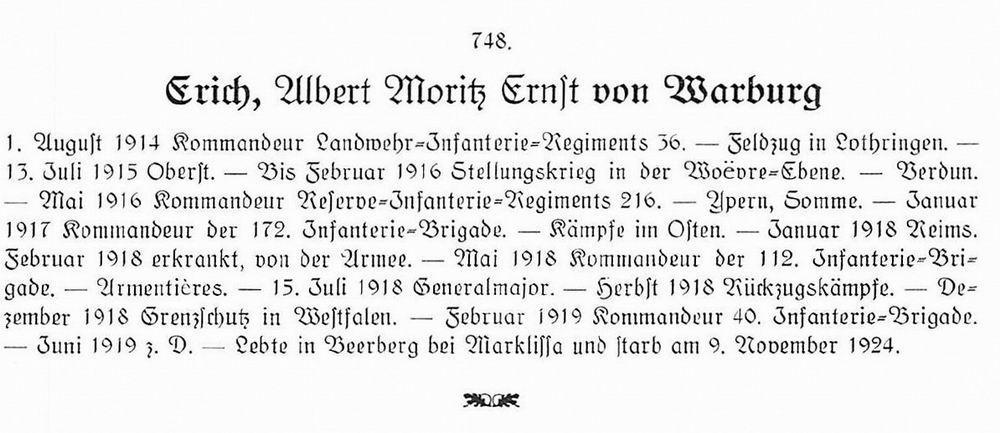
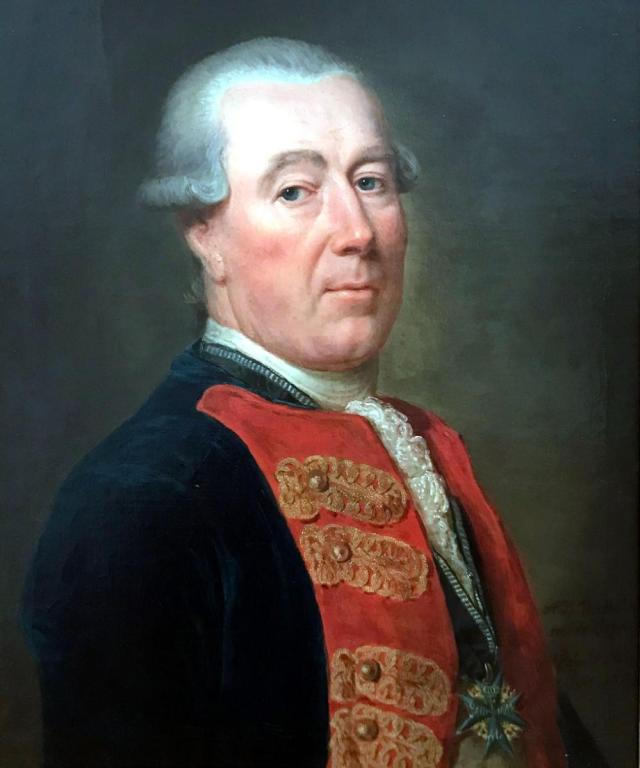
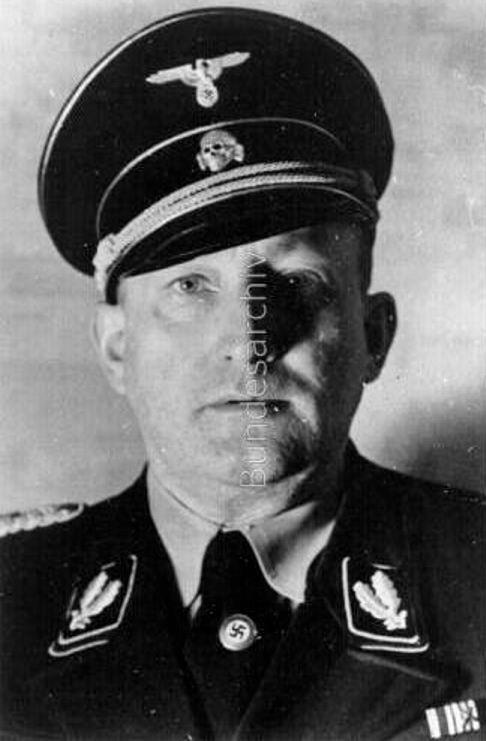
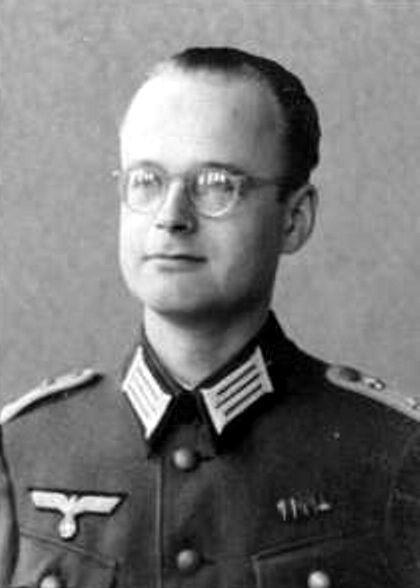
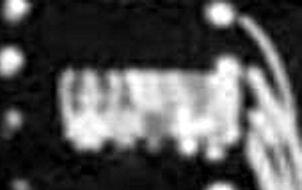
in1916.jpg.3be82c265fa68c05db4b10d2a41591c1.jpg)